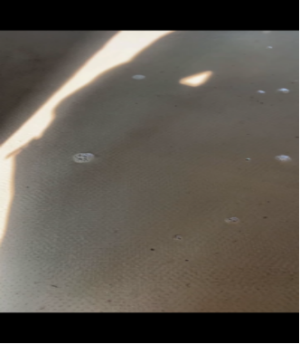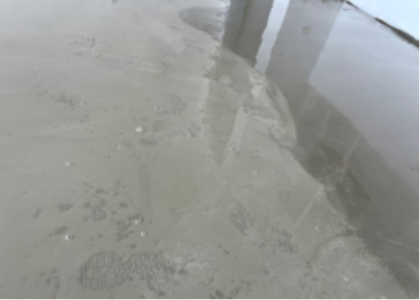Generally, the amount of water added for self-leveling is 25%.
There are several bubbles on the surface because there are holes in the base surface, and they are not sealed properly, which will not affect the final efficiency.
The problem with your construction can be seen on the surface. The obvious bleeding should be that the layer has already formed, and the water surface has already reached it.
This formula needs to be adjusted:
1. The total water volume is high. The dosage of ordinary Portland cement can be lower; otherwise, the shrinkage value may be significant.
2. The two retarders can be used together, but Sodium gluconate are not recommended when using tartaric acid. Your opening time is not a big problem, which can be seen by looking at the surface. Moreover, too many retarders can also easily delaminate.
3. Cellulose ether does not necessarily play a decisive role in bleeding. You need to test other methods. Consider adding a little microsilica powder.
4. Do not use 40-70 medium sand. According to the amount of coarse sand in your formula, the water you add should be around 20~22%.
Overall the formula is good.



